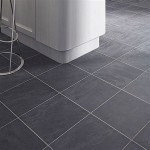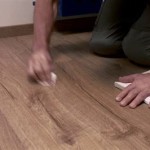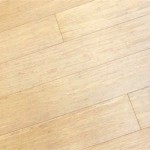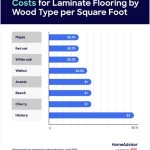Vinyl Flooring On Rough Concrete: Unveiling the Essential Aspects
Envisioning the seamless application of vinyl flooring on a rough concrete surface demands a comprehensive understanding of the underlying factors that ensure a successful installation. By meticulously addressing these essential aspects, homeowners and contractors alike can confidently embark on this transformative project, ensuring a durable and aesthetically pleasing outcome.
Substrate Preparation: A Foundation for Success
Establishing a level and smooth subfloor is paramount for the longevity and performance of vinyl flooring. Rough concrete surfaces necessitate meticulous preparation to eliminate any protrusions, depressions, or imperfections that could compromise the adhesive bond or damage the flooring material. Grinding or leveling compounds can be employed to achieve a uniform surface, providing an optimal base for vinyl installation.
Moisture Control: Combating the Silent Enemy
Moisture lurking within the concrete slab can wreak havoc on vinyl flooring, leading to premature deterioration and even buckling. Waterproof membranes or vapor barriers should be installed to effectively block moisture transmission from the subfloor into the flooring system. Moisture testing prior to installation is highly recommended to ensure a moisture-free environment for the vinyl flooring to thrive.
Adhesive Selection: The Unsung Hero
The adhesive serves as the critical link between the vinyl flooring and the concrete surface. Choosing the right adhesive is essential to ensure a secure and long-lasting bond. Factors such as subfloor conditions, vinyl type, and traffic intensity should be taken into consideration when selecting an appropriate adhesive. High-quality adhesives specifically designed for vinyl flooring on concrete provide optimal performance and peace of mind.
Plank Preparation: Ensuring Precision
Proper preparation of the vinyl planks before installation is crucial for achieving a flawless finish. Acclimating the planks to the room temperature and moisture conditions for at least 24 hours allows them to adjust to the environment, minimizing the risk of expansion or contraction after installation. Dry fitting the planks enables the installer to visualize the layout, identify any potential issues, and make necessary adjustments before applying adhesive.
Installation Techniques: The Art of Precision
Meticulous installation techniques are essential for a professional-looking and durable vinyl floor. Starting from the center of the room and working outward, each plank should be carefully aligned and pressed into place to ensure a strong bond with the adhesive. Staggering the joints between planks creates a more stable and visually appealing installation. Use a tapping block and a rubber mallet to gently secure the planks without damaging the material.
By adhering to these essential aspects, homeowners and contractors can confidently install vinyl flooring on rough concrete surfaces, resulting in a captivating and enduring floor that enhances the ambiance of any space.

How To Prepare A Concrete Floor For Vinyl Flooring Parrys

Vinyl Plank Flooring On Uneven Concrete

How To Install Vinyl Plank Flooring On Concrete Step By Guide

Concrete Subfloor Preparation For The Vinyl Floor Installation How To Diy Mryoucandoityourself

Wineo 800 Stone Xl Rough Concrete Buy Glue Down Vinyl Flooring

Guide To Lay Vinyl Flooring Over Floorboards

Vinyl Flooring Rough Concrete White

Vinyl Flooring Rough Concrete White

Rough Concrete Dark Grey Id Inspiration High Traffic 70 Plus Luxury Vinyl Tiles

Vinyl Flooring Pros And Cons Forbes Home
Related Posts








